Fix it all in post…Lytro Cinema Camera
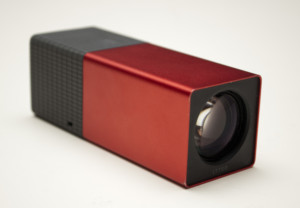 If you have been following the British Cinematographer magazine for the past five years or more (and I hope you have) you will have seen various discussions about the Lytro camera and the implications for cinematography going forward.
If you have been following the British Cinematographer magazine for the past five years or more (and I hope you have) you will have seen various discussions about the Lytro camera and the implications for cinematography going forward.
My original article was written rather tongue in cheek, yet with a suitably sobering thought going forward. I mentioned this camera could capture focus information and can be effectively focused after capture on the camera, so negating ever needing a good focus puller. It seems the technology has marched on quicker than ever imagined and we now have a fully working high resolution camera capable of quite extraordinary feats of technology.
As a brief recap, starting in 2012 from a camera in the shape of a square tube less than 5 inches long it was really nothing more than a novelty in its initial stages.
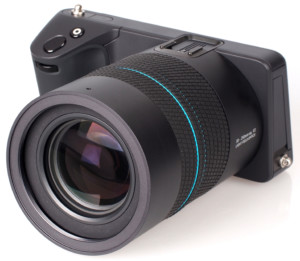 Then in April 2014 Lytro introduced its second generation camera in the form of the Lytro ILLUM light field camera. This had a 40 megaray camera sensor and was aimed primarily at keen amateur photographers.
Then in April 2014 Lytro introduced its second generation camera in the form of the Lytro ILLUM light field camera. This had a 40 megaray camera sensor and was aimed primarily at keen amateur photographers.
Since 2012 there have been some major developments and breakthroughs, and now the technology has become viable as a creative tool for the cinematographer. The implications of this are huge, yet the creative freedom it brings for certain projects will potentially revolutionise how we make movies going forward. It certainly won’t be competing against compact cameras we have at the moment as the form factor is staggeringly large, yet the concept of the light field camera creates some interesting possibilities and also brings up certain issues concerning how many people it would require to operate in the field.
Why is this so different to any other camera you have seen? It’s the way camera sensor records the light rays hitting the sensor that is so radical and revolutionary, with the possibilities only becoming obvious after you know what it does and how it does it. Light-field photography (also known as plenoptic photography) captures information about the intensity of light in a scene. Crucially it will also capture information about the direction that the light rays are traveling in space. Lytro’s light field sensor uses an array of micro-lenses placed in front of an otherwise conventional image sensor; to record intensity, colour, and directional information.
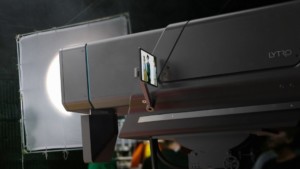 The implications for this are huge. When all this information is captured on the 755 megapixel sensor ( yes, you read that correctly! ) it is capable of capturing 16 stops of dynamic range, and up to 300 frames per second. This is technologically fascinating and groundbreaking in itself, however these are perhaps the least exciting features in the new Lytro Cinema Camera…
The implications for this are huge. When all this information is captured on the 755 megapixel sensor ( yes, you read that correctly! ) it is capable of capturing 16 stops of dynamic range, and up to 300 frames per second. This is technologically fascinating and groundbreaking in itself, however these are perhaps the least exciting features in the new Lytro Cinema Camera…
The technology and concept is potentially difficult to get a full understanding within the scope of this article, however if I explained the camera essentially creates a digital holographic representation of the subject in front of it, then many avenues of exploration opens up. Essentially the camera captures depth information as well as the traditional colour, focal point, movement, exposure and frame rates. In effect you are able to change focus and other elements long after you have sent the actors home and left the set.
Visual Effects
Compared to traditional cinematography where the decisions made on set are a combination of parameters set at the time of photography, the light field camera captures all this information and can be controlled and manipulated at the post production level. In other words such factors as focus, shutter speed and frame rate can be altered later. This gives a great potential for visual effects shots as it is possible to create different “slices” of a live scene and separates them out into different layers, (much like in Adobe Photoshop or After Effects). This effectively means every shot you create with this camera can effectively be separated out into components and become a very clean edged green screen shot! This is not merely a simulation of depth, it is actually re tracing every light ray into a 3D space. This negates the need for set tracking markers being placed on the cyc. Because the Z Axis ( or depth ) is already known, that layer can become a layer you can track and then easily cut out later.
3D
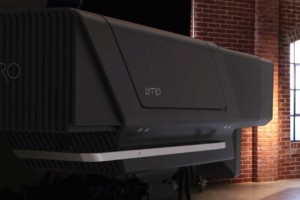 It also means if you can shoot in 2-D and 3D at the same time with the single camera! If you decide to create a high frame rate 3-D version there is no need to have two separate cameras and a stereographer continually setting the separation for each shot. Each separate shot has the same motion blur and gives a much finer 3-D effect that is optically perfect.
It also means if you can shoot in 2-D and 3D at the same time with the single camera! If you decide to create a high frame rate 3-D version there is no need to have two separate cameras and a stereographer continually setting the separation for each shot. Each separate shot has the same motion blur and gives a much finer 3-D effect that is optically perfect.
Clearly there is much more to this camera than just green screen and 3-D, and it still requires the skills of cinematography, lighting, camera movement, script, story and acting to make it a worthwhile experience for cinema. It does explore new areas of cinematography and in the right hands this can become an extremely interesting tool for the right project. For example, motion blur can be used as a creative tool in any shot at any point, and altered later during the shot rather than being “baked in ” on the set at the time of the shoot. This could be a new effect like “Bullet time” was in “The Matrix”.
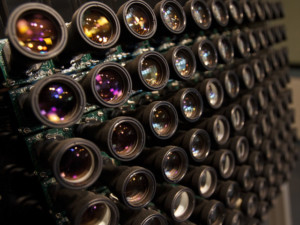 Whilst there may not be the need for a focus puller or a stereographer when using this camera, there will always be a need for a large set, sturdy tripod and a good camera grip to move this huge beast of a camera in its current form! It is currently one of the larger cameras available on the market at the moment… It is something akin to the size of a 1930’s blimped movie camera, so rather difficult to use on a small set or location. It is also connected to an array of computer servers all making huge amounts of fan noise. So that will annoy the sound recordists, the grips, along with a focus pullers and camera operators, and probably the producer, director and set designers too…! However I’m sure within time this size will be reduced to a more manageable and usable size in the future.
Whilst there may not be the need for a focus puller or a stereographer when using this camera, there will always be a need for a large set, sturdy tripod and a good camera grip to move this huge beast of a camera in its current form! It is currently one of the larger cameras available on the market at the moment… It is something akin to the size of a 1930’s blimped movie camera, so rather difficult to use on a small set or location. It is also connected to an array of computer servers all making huge amounts of fan noise. So that will annoy the sound recordists, the grips, along with a focus pullers and camera operators, and probably the producer, director and set designers too…! However I’m sure within time this size will be reduced to a more manageable and usable size in the future.
In all seriousness the camera has potential for some incredibly creative effects shots and going forward it could potentially create a “look” that is as unique as 35mm film at the cinema. The thought of “fixing it all in post” has now become a potential reality. Who would have thought that was possible?
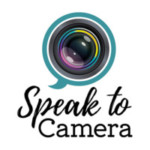
Leave A Comment